| Oct 21 |
Archive for October, 2015Is writing a book just like telling a big lie?The best question I’ve been asked by a young reader at a book signing this year: “Is writing a book just like telling a big lie?” I answered, “YES! Yes it is! It’s fantastic! And you completely get away with it, because you’ve ADMITTED you’re telling a big lie! Because that’s what ‘once upon a time’ means…” “Making stuff up is lying,” I said cheerfully, “and I’m quite open and clear and delighted about that! So yes, writing a book is exactly like telling a big lie!” And my answer made him happy. (Or, at least, made him go away looking thoughtful…) But was my answer correct? Do I really think that I’m lying when I’m writing a novel? Because, in my heart, I believe I tell the truth in my books. I set up a system of magic, and I stick to it rigorously. I create characters, and I let them do what is right for them (which is often extremely inconvenient.) I sometimes have discussions (arguments!) with editors, when I’m fighting for what feels TRUE for that story. I might say “no, we can’t do that, because Yann would never do that, or Helen would never say that.” And my editor knows what I mean – even though these characters are just words on a page, they still have to act consistently, in a way that seems true to the reader. So there is truth, in that long, extended, totally made up lie. For example, at the very end of First Aid for Fairies, one of my characters does something extremely brave, essentially sacrificing himself to save his friends from a monster. I set that scene up. I sent the monster after them, I locked the door to block their exit. I created the (entirely fictional!) situation. But I couldn’t have forced the character to make that choice, to do that dangerous and brave thing. That could only happen, and could only feel true within the huge lie of the novel, because he was a character whose loyalty and bravery we already believed in. And in the novel I’m finishing just now, I have a huge decision to make, about a choice the main character is going to make at the very end of the story. But even though I’m the writer, I’m not going to make that choice. Molly is going to make that choice, because it has to be the choice that is true to her, true to the character that I admit I’ve made up, but who has become real over the course of the three books I’ve written about her. So, yes, a novel is a lie, but I think it’s an honest lie. It’s also a lie that a writer puts a lot of effort into making convincing, at exactly the same time as admitting it is a big lie… (Look at this shiny cover! Look at these chapter headings! This is a story! It’s not real!) But we still need our stories to feel real, to feel true. That’s why I do so much location research, to make my books seem real. Even if I’m writing about magic spells and monsters, I need the book to have convincing settings and characters. I need the lie to feel true, so that you the reader care about the story, care about the characters, and keep reading to find out what happens next. Because while you are reading, it feels real. Even though you know it’s not real. It’s a big lie, and you know it’s a big lie, but you still enjoy it! If it didn’t feel real, because you know that location and you know the cave doesn’t go that deep into the earth, or the castle door doesn’t look like that, then suddenly you’d be reminded that it was a big lie, which would knock you out of the story. So that’s why even though a novel is a big lie, and even though I ADMIT it’s a big lie, I still make sure it’s a convincing big lie… If stories are big lies, then they are big lies that we as writers make as true as we can, and big lies that we as readers seem to need… Right, I’m off to write another chapter of a great big huge exciting lie… What a brilliant job! |
| Oct 03 |
Archive for October, 2015Why do we love shapeshifters?I LOVE stories about shapeshifters. I’ve made up a few shapeshifter stories myself: Rona, the selkie in the Fabled Beast Chronicles, regularly shifts from girl to seal and back again. And Rona was the first character, apart from Helen, who got her own point of view chapters and heroic action, in Storm Singing. Those scenes were some of the most challenging I’ve ever written, because I had to imagine myself as a creature of a completely different shape, with completely different abilities. Also thinking about why and when Rona would choose to shift from one shape to another was fascinating. (It usually came down to the use of hands …) Most of my shapeshifting knowledge and lore comes from old stories, and a remarkably high percentage of my favourite traditional tales are about shapeshifters. When I collected my favourite Scottish folktales and legends in Breaking the Spell, four out of the ten tales were about shapeshifting of some kind or another. In Girls, Goddesses and Giants, my collection of heroine stories, my favourite baddie (who is defeated by my favourite heroine) is a shapeshifting demon. And The Tale of Tam Linn, a retelling of my favourite Scottish fairy tale, illustrated by the magically talented Philip Longson, is also about shapeshifting – a boy who is stolen by the fairies, and then turned into lots of different Scottish animals (stag, wolf, wildcat…) to try to prevent a girl from rescuing him. Now, I’ve followed the logic of that path, and written a whole collection of shapeshifters. Serpents & Werewolves is a collection of fifteen of my favourite shapeshifter stories… illustrated by Francesca Greenwood’s stunning silhouettes. There’s a frog, who doesn’t get kissed, and a dragon, who does. There are several werewolves: a goodie werewolf (sort of), some baddie werewolves (definitely), and a werewolf cub, who was great fun to write. There are escaping fish and diving birds and tricky foxes, a very large serpent and a very tiny caterpillar, and all of them change shape as the story goes on… As with all the collections I write, some of these stories are ones I’ve loved and told for years. But some of them are new discoveries for me, as I researched shapeshifting tales, looking for stories that I wanted to get to know, from lots of different places, about lots of different animals. And I found, as always, that researching and writing a book threw up more questions than answers: Why does almost every culture in the world have stories about people changing into animals, and animals changing into people? Why do we want (or need) to imagine something human in animals, and something animal in humans? Why do we like to imagine ourselves with the strengths (and weaknesses) of animals? Is it shapeshifting a superpower or a curse? At a logical level (because I like my magic logical…) if you shift into something much bigger or much smaller than your human self, where does the extra bulk come from, or go to? And what animal or bird what would I like to turn into… ? My fascination with shapeshifting hasn’t ended yet! I’m still asking those questions, and I’m still writing about shapeshifters… I can’t give too much away just yet, but in the trilogy of novels I’m working on, the main character is a slightly reluctant shapeshifter… So right now I am having great fun writing about creatures much smaller and much faster than I usually do. So, there are more shapeshifters to come! And if you want a wee taste of the stories in Serpents and Werewolves, here is a sample put online by my publishers…. |
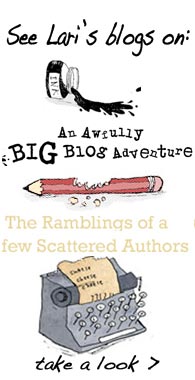
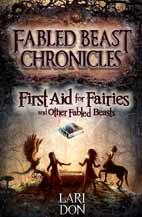
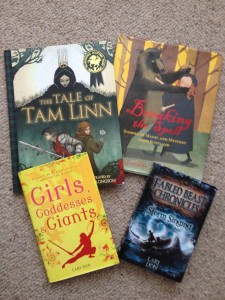
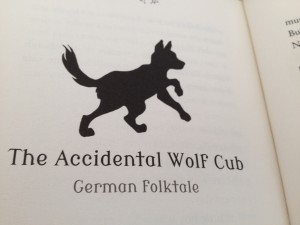
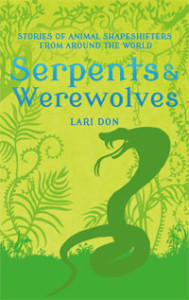
Recent Comments